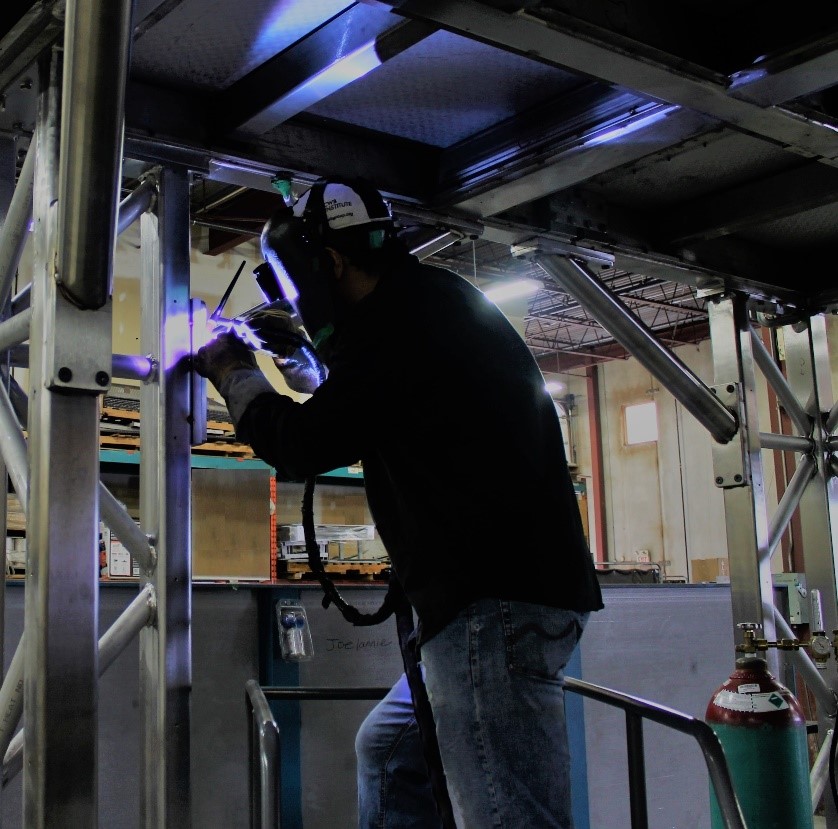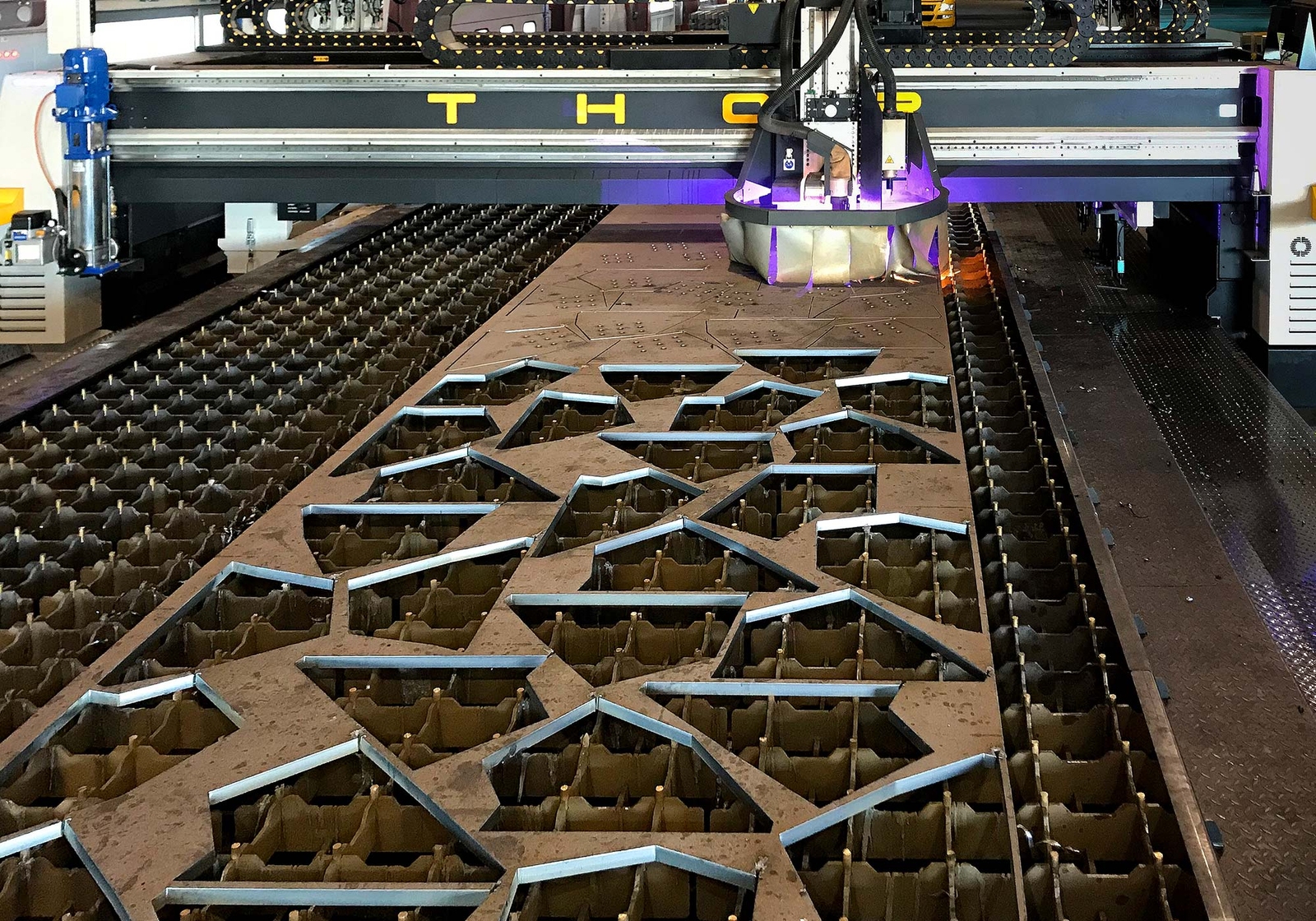Advanced Steel Fabrication Melbourne: Structure the Future Today
Advanced Steel Fabrication Melbourne: Structure the Future Today
Blog Article
Innovative Fads in Steel Construction: Enhancing Resilience and Precision
In the realm of steel fabrication, the pursuit of longevity and accuracy has led to a wave of innovative trends that are reshaping the industry. These patterns are not just forming the present yet likewise laying the foundation for the future of steel construction, assuring further improvements in durability and precision.
Advanced Welding Technologies
In the world of steel fabrication, the adoption of innovative welding modern technologies has considerably revolutionized the industry's method to attaining premium high quality and accuracy in structural welds. Advanced welding modern technologies, such as laser light beam welding and friction mix welding, have actually become game-changers in the field. Laser light beam welding uses a concentrated laser light beam to sign up with metal components with amazing precision and speed, making it optimal for thin products and complex layouts. On the various other hand, friction stir welding develops incredibly solid bonds by mechanically intermixing the molecules of the products at the joint, getting rid of the demand for thawing the steel. These technologies use numerous advantages, consisting of minimized heat-affected zones, minimal distortion, and improved mechanical homes in the welded joints. By leveraging these advanced welding strategies, steel makers can raise the toughness, stamina, and precision of their architectural welds, fulfilling the progressively demanding requirements of modern building projects.
Robotic Automation in Construction
Accepting robot automation has actually ended up being a keystone of contemporary steel manufacture methods, boosting and simplifying processes performance throughout the market. Robots are transforming the means steel elements are made, offering unrivaled accuracy and rate while minimizing human error. These automated systems can handle repetitive tasks with constant accuracy, bring about better end products.
One trick benefit of robot automation in steel fabrication is the capability to work all the time without exhaustion, substantially boosting production outcome. This continual procedure decreases downtime and accelerates project timelines, ultimately conserving prices for producers. Furthermore, robots can be set to do elaborate tasks that might be challenging or harmful for human employees, improving safety and security in the work environment.
Additionally, robotic automation enables seamless assimilation with other electronic modern technologies, such as computer-aided style (CAD) software and Web of Points (IoT) systems (steel fabricators melbourne). This interconnected method enhances interaction between various stages of fabrication, maximizing operations and guaranteeing real-time surveillance and control. As the steel construction industry remains to evolve, robot automation stands out as a transformative force driving effectiveness and accuracy in manufacturing procedures

High-Strength Alloy Development
The innovation of high-strength alloy development in steel construction is improving the industry's strategy to improving material longevity and performance. High-strength alloys are crafted to show exceptional mechanical properties, such as raised tensile stamina, toughness, and rust resistance contrasted to conventional steel qualities. By integrating these sophisticated alloys right into manufacture procedures, manufacturers can create elements that stand up to greater stress and anxiety levels and rough settings, bring about more resilient and trusted end items.
One look at this site key benefit of high-strength alloy advancement is the ability to reduce product density without compromising architectural stability. This not just leads to lighter-weight elements but also adds to cost savings and enhanced effectiveness in fabrication and setting up procedures. Moreover, the improved strength-to-weight proportion of these alloys permits for the design and building of structures with higher load-bearing capacities while decreasing overall weight.
3D Modeling and Simulation Software Application
Improvements in steel construction procedures have been dramatically thrust by the assimilation of cutting-edge 3D modeling and simulation software application devices. These devices try this allow makers to produce comprehensive digital versions of their projects, enabling them to picture the last product with precision prior to any type of manual labor begins. By mimicing various tension factors, ecological conditions, and structural loads, fabricators can maximize styles for enhanced resilience and performance. Additionally, 3D modeling and simulation software program enhance the manufacturing procedure by determining prospective issues beforehand, minimizing the requirement for costly rework and reducing product waste.

Lasting Practices in Steel Production
Including lasting techniques right into steel production procedures is important for reducing ecological impact and guaranteeing long-lasting source availability. One key sustainable method is the adoption of energy-efficient innovations to reduce greenhouse gas discharges throughout the steel manufacturing procedure. This consists of utilizing renewable resource sources, such as solar or wind power, to power steel plants and carrying out energy-efficient equipment to maximize energy use.
Another crucial element of lasting steel production is the accountable sourcing of resources. This involves ensuring that the iron ore and other sources utilized in steelmaking are obtained from ecologically pleasant and moral resources. By promoting transparency in the supply chain and adhering to stringent ecological requirements, steel suppliers can reduce the unfavorable influences of resource removal on regional ecological communities and neighborhoods.

Verdict
To conclude, the innovative patterns in steel manufacture such as advanced welding modern technologies, robotic click for info automation, high-strength alloy advancement, 3D modeling and simulation software application, and sustainable practices are boosting the longevity and precision of steel items. These developments are reinventing the steel fabrication sector by boosting effectiveness, sustainability, and high quality. It is clear that the future of steel construction hinges on accepting these cutting-edge technologies to satisfy the needs of modern-day building and production industries.
In the world of steel manufacture, the pursuit of durability and accuracy has actually led to a wave of cutting-edge fads that are reshaping the industry.In the world of steel fabrication, the fostering of sophisticated welding innovations has dramatically transformed the market's technique to achieving superior top quality and precision in structural welds. As the steel manufacture sector proceeds to progress, robot automation stands out as a transformative pressure driving efficiency and accuracy in producing procedures.
Moreover, reusing and recycling steel scrap and waste products play a considerable function in improving the sustainability of steel production. steel fabrication melbourne.In conclusion, the innovative patterns in steel fabrication such as advanced welding technologies, robot automation, high-strength alloy growth, 3D modeling and simulation software program, and lasting techniques are enhancing the durability and precision of steel products
Report this page